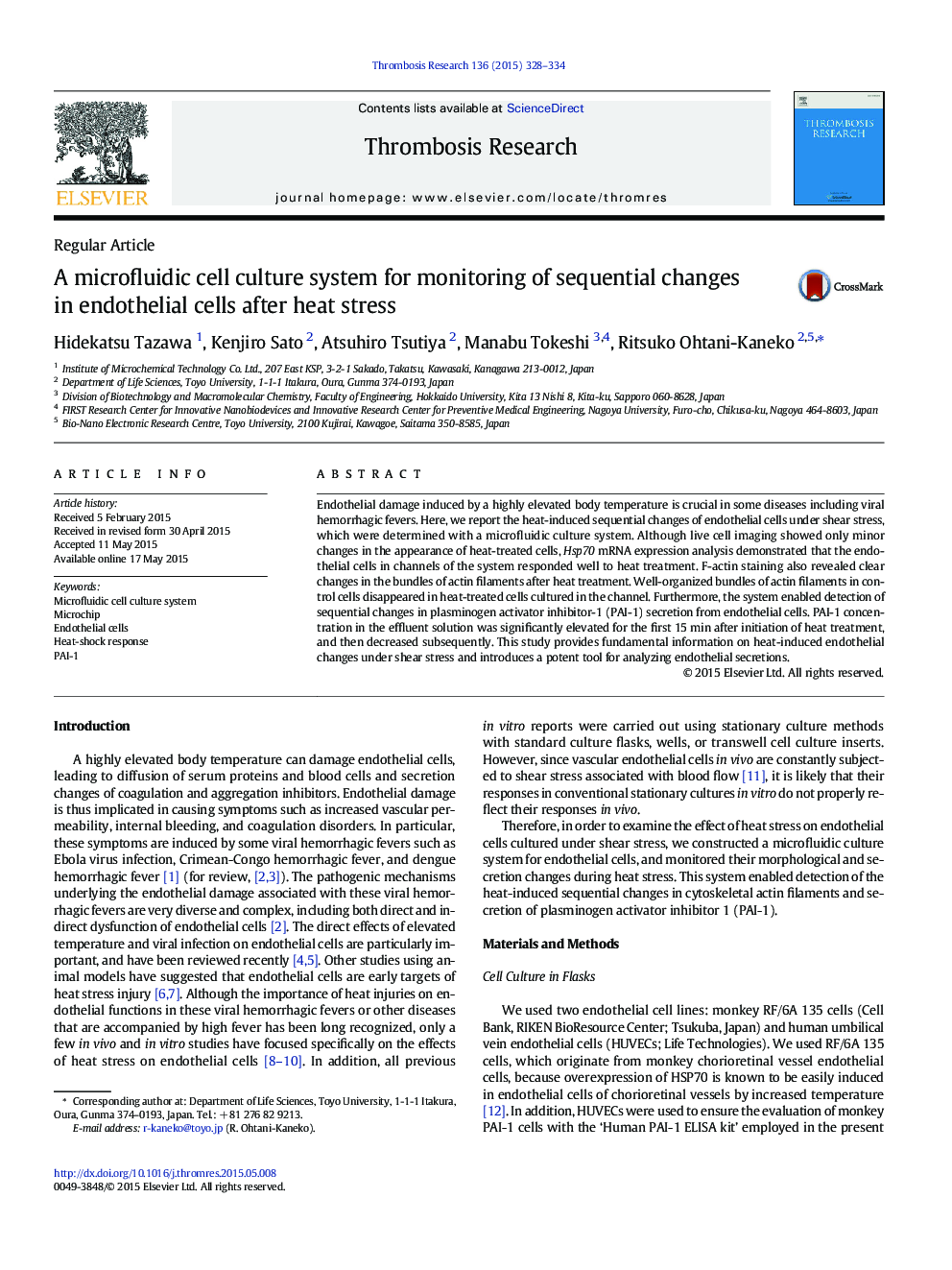| Article ID | Journal | Published Year | Pages | File Type |
|---|---|---|---|---|
| 6001304 | Thrombosis Research | 2015 | 7 Pages |
â¢We examine the heat-induced sequential changes of endothelial cells under shear stress with a microfluidic culture system.â¢The endothelial cells in channels of the system responded well to heat treatment.â¢The bundles of F-actin filaments collapse after heat treatment.â¢We can detect sequential changes in PAI-1 secretion from endothelial cells after heat treatment.
Endothelial damage induced by a highly elevated body temperature is crucial in some diseases including viral hemorrhagic fevers. Here, we report the heat-induced sequential changes of endothelial cells under shear stress, which were determined with a microfluidic culture system. Although live cell imaging showed only minor changes in the appearance of heat-treated cells, Hsp70 mRNA expression analysis demonstrated that the endothelial cells in channels of the system responded well to heat treatment. F-actin staining also revealed clear changes in the bundles of actin filaments after heat treatment. Well-organized bundles of actin filaments in control cells disappeared in heat-treated cells cultured in the channel. Furthermore, the system enabled detection of sequential changes in plasminogen activator inhibitor-1 (PAI-1) secretion from endothelial cells. PAI-1 concentration in the effluent solution was significantly elevated for the first 15Â min after initiation of heat treatment, and then decreased subsequently. This study provides fundamental information on heat-induced endothelial changes under shear stress and introduces a potent tool for analyzing endothelial secretions.
